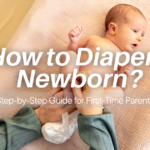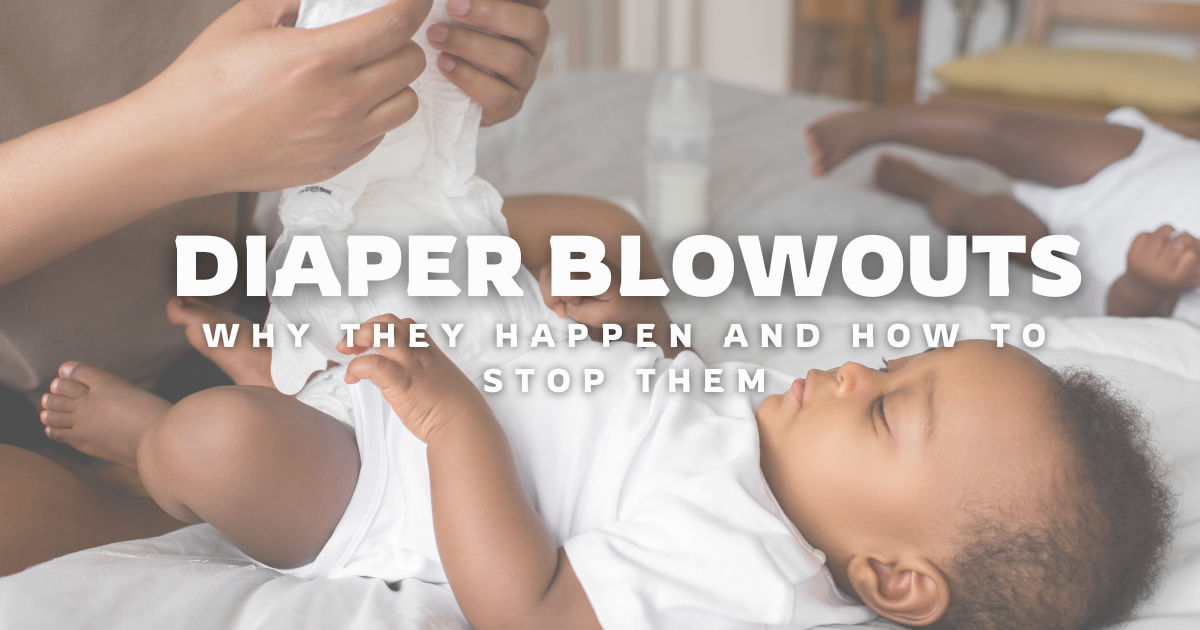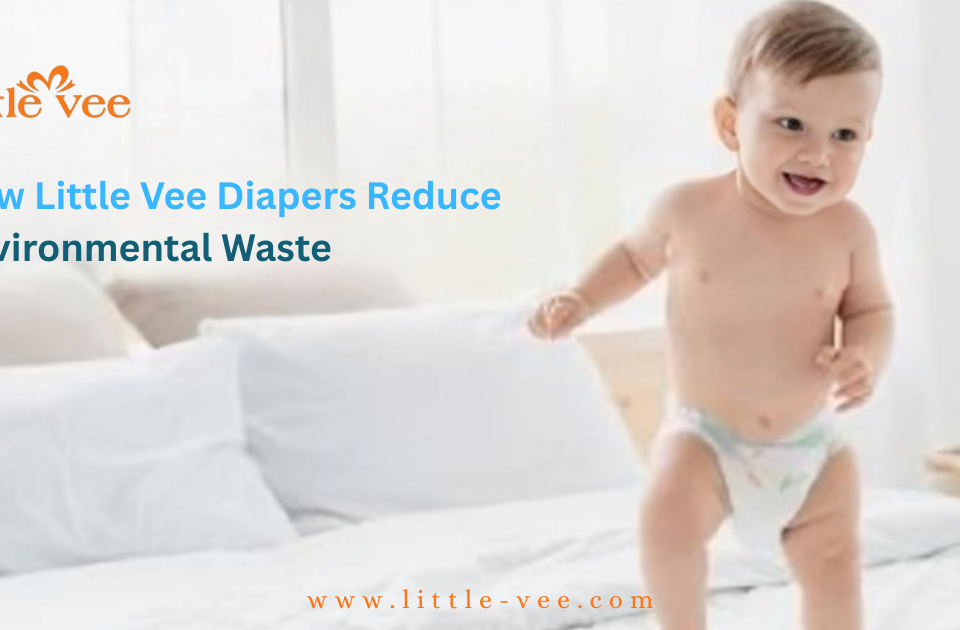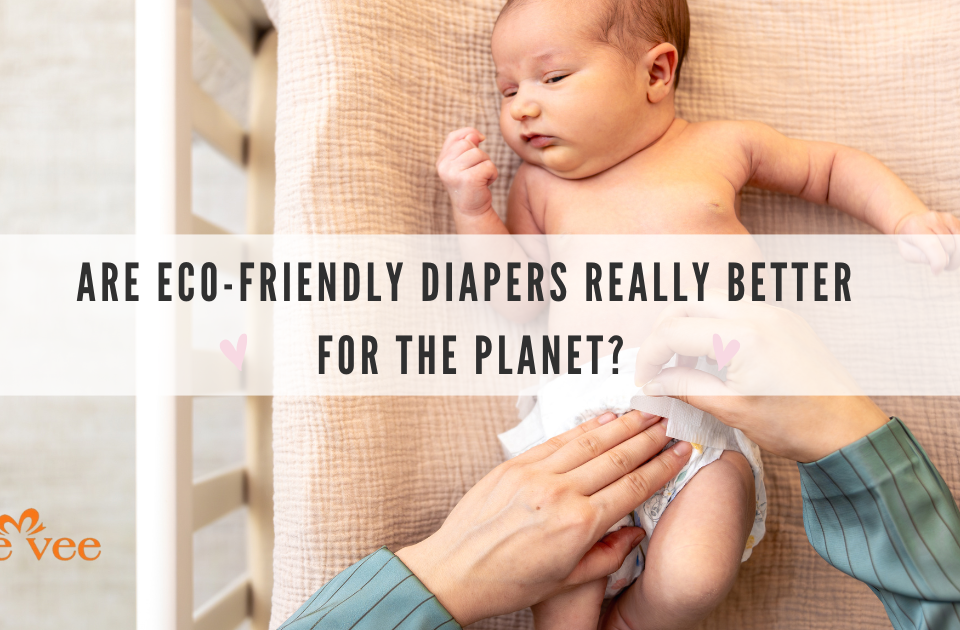
How to Diaper a Newborn: Step-by-Step Guide for First-Time Parents
July 20, 2025
What Makes a Diaper Hypoallergenic?
July 24, 2025There’s nothing quite like opening your baby’s onesie only to discover… a full-blown diaper disaster. Diaper blowouts are a messy and frustrating part of parenting, especially during the early months. If you’re wondering why they happen and—more importantly—how to stop them, you’re not alone.
In this guide, we’ll explain what causes diaper blowouts, when they’re most common, and what you can do to prevent them. Let’s save your laundry, your sanity, and your baby’s outfit!
👶 What Is a Diaper Blowout?
A diaper blowout happens when poop escapes the diaper and ends up on your baby’s back, legs, or clothes. It’s usually the result of an explosive bowel movement combined with a diaper that wasn’t able to contain it.
While blowouts are more common in newborns and young infants, they can happen at any age—and they’re almost always at the most inconvenient time!
🧷 Why Do Diaper Blowouts Happen?
There are a few common reasons diaper blowouts occur:
1. Wrong Diaper Size
If the diaper is too small, it won’t have enough coverage or room to absorb a big mess. If it’s too big, there may be gaps that allow leakage.
2. Poor Fit Around the Legs or Waist
Loose leg cuffs or a diaper that isn’t snug around the waist can let poop escape, especially when your baby is sitting, crawling, or wiggling.
3. Overfilled Diaper
Waiting too long between changes can cause the diaper to become overloaded and unable to hold more.
4. Positioning of the Diaper
If the back of the diaper isn’t pulled up high enough or the tabs aren’t placed evenly, it might not catch everything it should.
5. Low-Quality Diapers
Thin or poorly designed diapers often don’t have strong leak guards or a high enough back panel to keep everything inside. That’s why choosing a reliable brand like Little Vee Diapers can make all the difference.
🧼 How to Stop Diaper Blowouts
Here are practical steps you can take to reduce or even eliminate diaper blowouts:
1. Choose the Right Size
Check the weight guidelines on the diaper packaging. If you notice frequent blowouts and the diaper feels tight or leaks at the back, it might be time to size up.
2. Get a Snug Fit
Make sure the diaper is snug but not too tight around the waist and thighs. Run your finger around the waistband and leg cuffs to check for gaps.
3. Use Diapers with Leak Barriers
Opt for diapers with built-in leak guards and a high-rise back. At Little Vee, our diapers are designed with extra back coverage and absorbent cores that keep messes in—not on your baby’s clothes.
4. Change Frequently
Don’t let diapers get too full. Changing your baby every 2–3 hours during the day and right after a poop can help prevent overflows.
5. Dress Smart
Use bodysuits with snug leg openings or diaper covers as extra protection, especially when you’re on the go.
🚨 When Blowouts Might Signal Something More
Occasional blowouts are normal. But if they’re happening constantly, your baby may have diarrhea, a digestive issue, or be reacting to a new food or formula. If you’re concerned, always check with your pediatrician.
💛 Final Thoughts from Little Vee
Blowouts may be part of parenting, but they don’t have to be a regular event. With the right diaper fit, frequent changes, and high-quality protection from Little Vee, you can keep the mess where it belongs.
Our diapers are built for comfort, absorbency, and blowout protection—so your baby stays happy and your day stays clean (well… cleaner).





